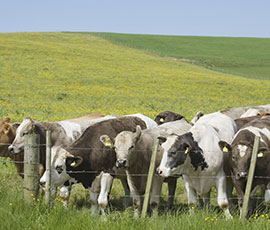‘Scots beef sector faces challenges in 2014’

Next year will be critical for the Scottish meat industry, with tight supplies, CAP reform, high beef prices and red tape the key issues, warn the country’s meat wholesalers.
“The potential for growth and development for our industry is enormous, with strong export opportunities emerging on a regular basis,” said Alan McNaughton, president of the Scottish Association of Meat Wholesalers (SAMW).
“However, extremely tight livestock supplies and a sharp rise in cattle prices in recent months are having a limiting effect on business development, with the likelihood that similar pressures will carry over into next year.”
Getting sufficient livestock to supply traditional home market outlets as well as meeting new export opportunities would be a challenge – beef cow numbers in Scotland had dropped by 60,000 since the last CAP reform in 2004. Producers and processors need the right signals for their sectors to develop.
“The current supply/demand/price pattern cannot continue much longer without causing serious damage to our industry. Cattle prices have risen by 15% since the beginning of 2013 while market returns have increased by just 7%. There is no way these two figures add up.
“Commercial reality dictates that the current high prices cannot last forever without driving processors out of business, and/or driving consumers away from beef. If that happens, then Scotland’s processing capacity will shrink, our meat sector growth potential will decline and we’ll be left watching other countries fill the gaps which have been created.
“There have been many points of progress in the past year but in almost every instance each new gain or opportunity has been accompanied by a risk or a threat which could prevent our industry from fulfilling its potential.”
These included:
- Securing an 8% coupled payment for beef calves through CAP reform (up from 4.5%) – however unless the rest of the CAP package delivered what productive farmers need to commit to beef long term, the new coupled payment advantage could be swept away in 2014
- Implementation of new animal movement regulations and the introduction of new certificates of animal welfare competence for plant workers – but the process had been long and tortuous
- Progress towards the formation of Scotland’s new food body to operate from April 2015, which should deliver improved efficiencies and reduced meat inspection costs
- Further steady removal of BSE restrictions
- Working on the modernisation of meat inspection, with a new structure for pigs in 2013 and prospects for advances on sheep and cattle in 2014.
Faster turnover key to improving beef profits
